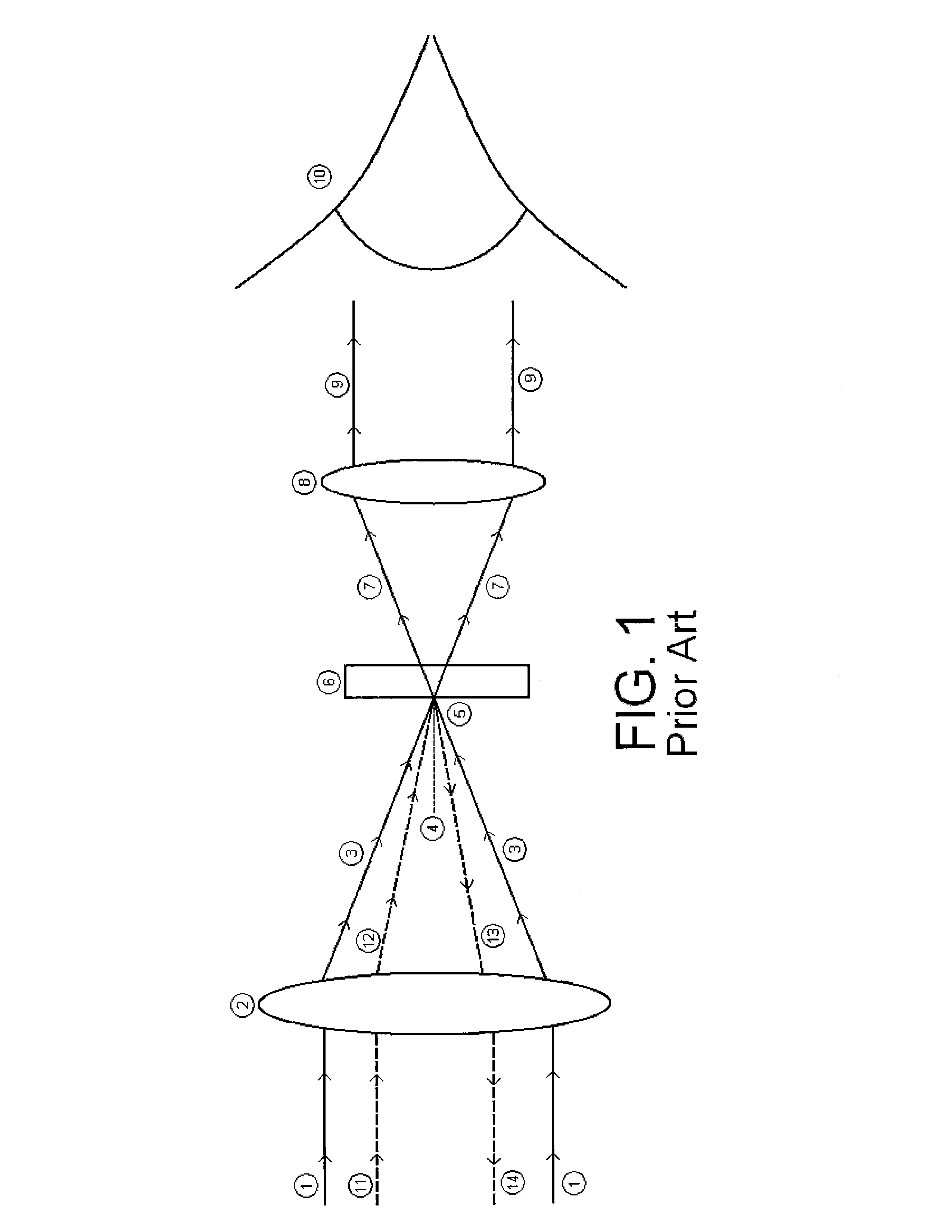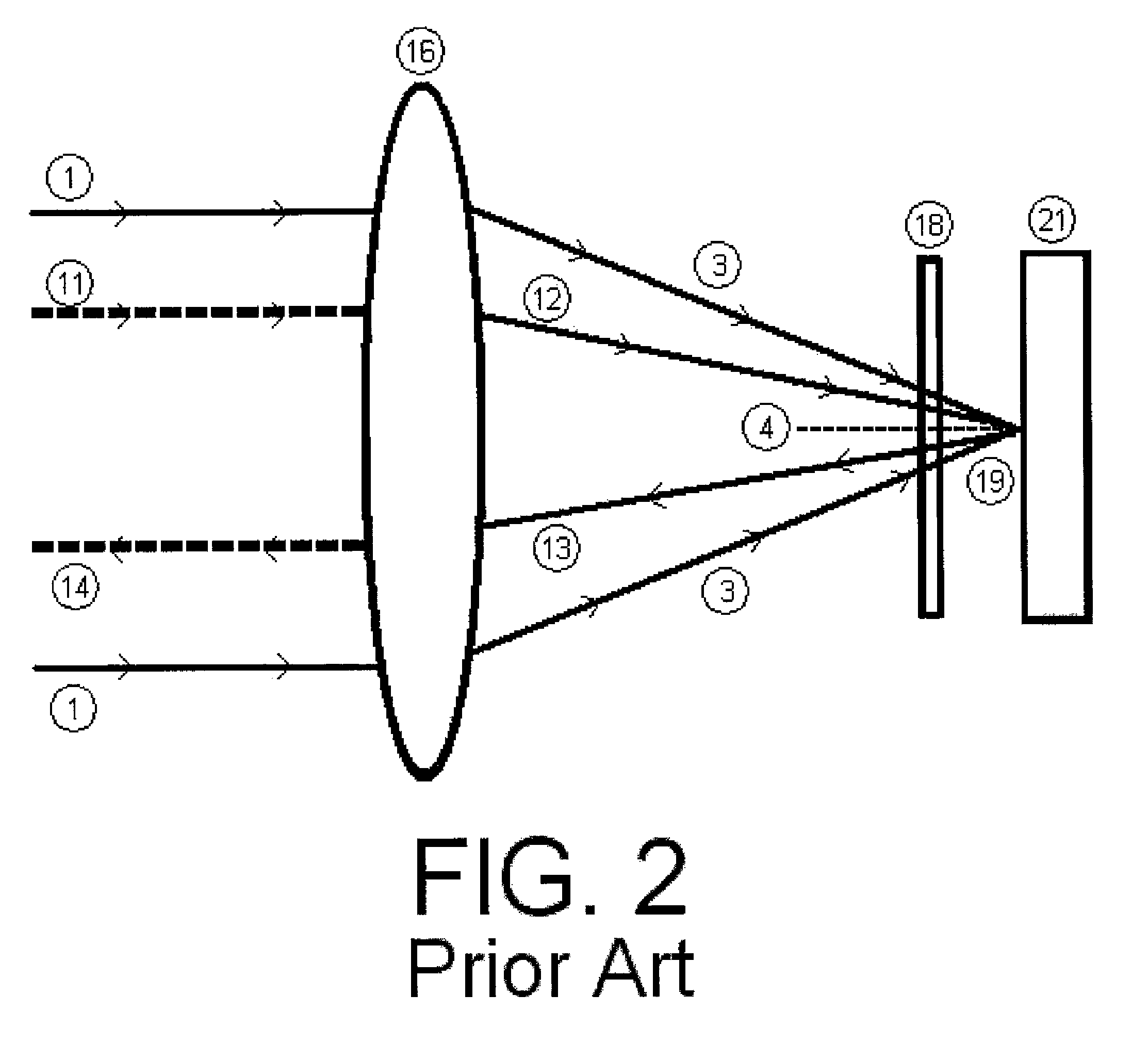Handheld optics detection system
a detection system and hand-held technology, applied in the field of collimated, monostatic, retroreflection-based optical systems, can solve the problems of not providing a retroreflection of sufficient energy intensity, and achieve the effects of high sensitivity, high sensitivity, and added clarity and contras
- Summary
- Abstract
- Description
- Claims
- Application Information
AI Technical Summary
Benefits of technology
Problems solved by technology
Method used
Image
Examples
Embodiment Construction
[0021]A first embodiment of the present active imaging retroreflection detection system 100 invention, for the detection of optical systems, such as sniper scopes (hereinafter “target”), is shown schematically in FIG. 3. The present invention is switchable by the user to emit either a single, or a set of two laser beams, i.e. a near-IR laser beam, generated by a first near IR laser 35, or a combination of this near-IR beam and a second visible light laser 36. The switching system, which is well known in the art, is not shown in FIG. 3. These beams are shaped by diverging lenses, wedge prisms, and / or cylindrical lenses 37, 38 into narrow, elongated, generally elliptical in shape sensing beams 11, to maximize the power of the retroreflected beam (as discussed below), as well as, to limit the field of view, as to focus the users attention on and localize targets. The sensing beams 11 from the lasers 35, 36 are channeled by rhomboid prisms to be emitted collimated to each other and gene...
PUM
| Property | Measurement | Unit |
|---|---|---|
| wavelength | aaaaa | aaaaa |
| wavelength | aaaaa | aaaaa |
| optical density | aaaaa | aaaaa |
Abstract
Description
Claims
Application Information
 Login to View More
Login to View More - R&D
- Intellectual Property
- Life Sciences
- Materials
- Tech Scout
- Unparalleled Data Quality
- Higher Quality Content
- 60% Fewer Hallucinations
Browse by: Latest US Patents, China's latest patents, Technical Efficacy Thesaurus, Application Domain, Technology Topic, Popular Technical Reports.
© 2025 PatSnap. All rights reserved.Legal|Privacy policy|Modern Slavery Act Transparency Statement|Sitemap|About US| Contact US: help@patsnap.com



